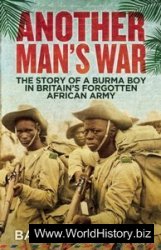At present, it remains difficult to assess materially the way or ways in which ancient Egyptian society conceived of human life, starting from conception itself. Histories of medicine now tend to start later, from views among ancient Greek writing (Glenister 1964), including the view that a fetus was entirely developed from the semen deposited in a female body (Empedocles of Agrigentum, fifth century BC; Galen in Alexandria), as well as the view that both man and woman contributed to the substance of a fetus (Aristotle, fourth century BC). Manuals for healing from the previous fifteen hundred years do not provide direct ancient Egyptian comment on conception, though several shed light on treatment of mother and child at
Birth. The earliest is a three-page series of pregnancy treatments and birth prognoses from about 1800 bc, found at Lahun (see following text); rather than the word khered, “child,” a prognosis refers to “the one she will give birth to” (UC32057, col.3, 2). Other sources refer to the child in the womb, though it is still not clear from precisely which point of pregnancy a child is thought to be present. A papyrus roll from about 1400 bc preserves a series of protective incantations including one “to be spoken over the two bricks” supporting the mother at birth (Roth and Roehrig 2002). The speaker asks the personification Meskhenet, “birth brick,” to “make the ka of this child who is in the womb of this woman” and asserts “I have made a divine decree of Geb that he make the ka” (Berlin 3027, col.5, l.10-col.6, l.1). Another in the same series aims to repel any negative force “from the head, from the brow, from any limb formed by Khnum for this child born of his mother” (col.1, l.8-9). The earth god Geb and the clay-molding god Khnum appear more often in written sources relating to the birth and protection of the king but seem to be invoked in these passages as forces fashioning all human body and life. These second-millennium BC manuals may reflect the richest circles, where the view of humanity may have been modeled on still earlier views of the king as a seed of the sun-god present from conception, with a physical body fashioned by Khnum as a potter fashions clay into a vase (Bickel 1994, 202-203 comparing Pyramid Text 324, for King Teti, about 2300 bc).
Social and historical context may also separate off the single instance where richer humans are given a different origin to other people, a desert quarry inscription dated about 2000 bc, when the kingship of Egypt was disputed between Waset in the south and Hutnennesut in the north. According to that inscription, the leading social group of governors and their kin come from the tears of the creator, while less wealthy groups are from his urine. This startling division in human origins is without parallel in Egyptian sources; it might be a rare glimpse of elite views, or it might reflect the harsher worldview of that social group, or a part of it, only at a moment of conflict and extreme stress, with competition over selection for rule.




 World History
World History









